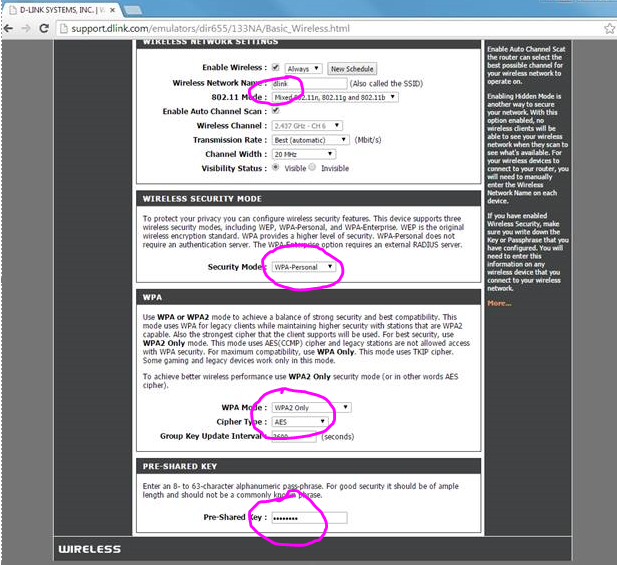

- WIFI SECURITY WEP VS WPA WHICH DO I HAVE CHROMECAST FULL
- WIFI SECURITY WEP VS WPA WHICH DO I HAVE CHROMECAST PASSWORD
For the most part, all you need is basically a password to log into these networks.Įnterprise mode, on the other hand, is designed primarily for enterprise networks, and while it does provide additional security, it also requires a much more complicated setup. The Personal mode, also referred to as PSK or pre-shared key, is primarily designed for home and small office networks and doesn’t require an authentication server. As such, the Personal and Enterprise modes are not so much different encryption protocols, rather mechanisms for authentication key distribution to distinguish between end-users. Some of you may be wondering about a few more confusing acronyms that you have to deal with while setting up your router. While the older WPA was designed to be backwards compatible with older Wi-Fi hardware secured with WEP, WPA2 does not work with older network cards and legacy devices.ĭifference between Personal, Enterprise, and WPS The newest and most secured WPA2 protocol, which became the industry standard in the middle of the last decade, should be the default security algorithm for virtually all Wi-Fi equipment launched 2006 onwards, when the standard became mandatory for all new Wi-Fi devices. WPA (Wi-Fi Protected Access), which superseded WEP, is a newer protocol that is relatively more secure, although, that too has been shown to be singularly ineffective against competent hackers. etc.? To start off, the one thing that you must absolutely remember is that WEP, or Wired Equivalent Privacy, is a decades-old protocol that has been proven to be extremely vulnerable, which is why it should be consigned to the annals of history where it belongs. You get the option to use either TKIP or AES with most routers available in the market today, but what what about all those other pesky acronyms, like WPA, WPA2, WEP, PSK, Enterprise, Personal, etc. Image Courtesy: D-Link WPA, WPA2, WEP: What About These Acronyms?
WIFI SECURITY WEP VS WPA WHICH DO I HAVE CHROMECAST FULL
While some cryptographers have, from time to time, presented evidences of supposed vulnerabilities in AES, all of those have either been shown to be impractical or ineffective against full AES-128 implementation. federal government, and is the only publicly accessible cipher approved by the country’s National Security Agency (NSA). It is the encryption standard of choice for the U.S. Unlike its predecessor, AES doesn’t use the Fiestel network and instead, uses a design principal known as substitution-permutation network as the base for its block cipher algorithm. Although it comes with its own baggage, it is a much more secured protocol that supersedes that legacy DES (Data Encryption Standard) protocol that was originally published back in the 1970s.


Short for Advanced Encryption Standard, AES is a set of ciphers that’s available in a block size of 128 bits and key lengths of either 128, 192 or 256 bits depending on the hardware. Having said that, some of the new security features implemented by the WPA-PSK (TKIP) standard, like per-packet key hashing, broadcast key rotation and a sequence counter, meant that it was able to eliminate some of the weaknesses of WEP, like the infamous key recovery attacks that the older standard was susceptible to, although, the protocol has significant vulnerabilities of its own. That’s because TKIP uses the same underlying mechanism as WEP, and is hence, equally vulnerable to attacks. While TKIP was intended to be at least relatively more secured than WEP, the standard has since been deprecated in the 2012 revision of Wi-Fi 802.11 after it was found to have glaring security loopholes that can be exploited by hackers without too much of a problem. TKIP, or Temporary Key Integrity Protocol, was introduced in the early years of this millennium as a stopgap security measure to replace the older and inherently unsafe WEP (Wired Equivalent Privacy) encryption standard which was widely used on early Wi-Fi equipment that were launched in the late 1990s and early 2000s.


 0 kommentar(er)
0 kommentar(er)
